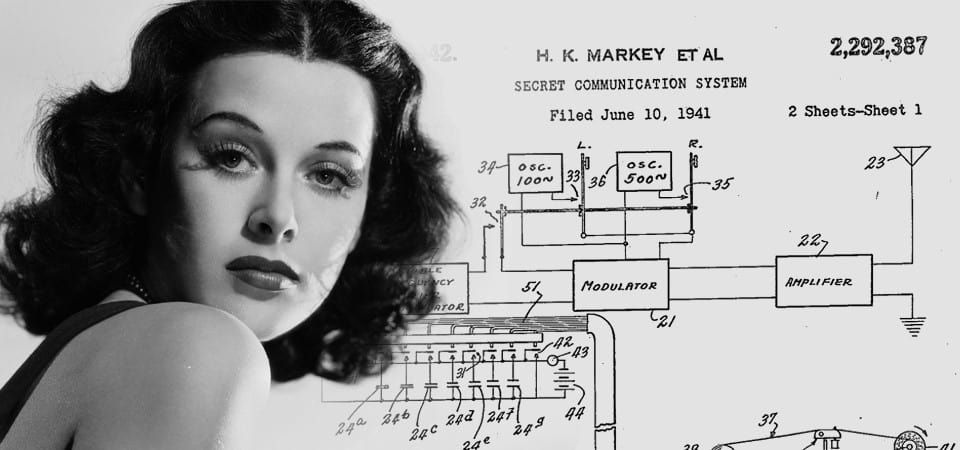When discussing the origins of Bluetooth, the name Hedy Lamarr might not immediately come to mind. Yet, this iconic Hollywood actress and inventor played a significant role in the development of the technology we now rely on for wireless communication. Lamarr’s remarkable contributions to the invention of Bluetooth are often overlooked, but her story serves as a powerful reminder of the intersection between art, science, and innovation.
Born Hedwig Eva Maria Kiesler in 1914 in Vienna, Austria, Lamarr pursued a successful acting career in Hollywood during the 1930s and 1940s. However, her remarkable talents extended far beyond the silver screen. Lamarr possessed a keen intellect and a natural curiosity for science and technology. It was this insatiable thirst for knowledge that would eventually lead her to make groundbreaking contributions to wireless communication.
During World War II, Lamarr’s concern for the security of Allied communications became a driving force behind her inventive endeavors. Alongside composer George Antheil, Lamarr conceptualized a groundbreaking system known as frequency hopping spread spectrum. This system aimed to overcome the vulnerabilities of radio-guided torpedoes by making it difficult for enemies to intercept or jam the transmitted signals.
The frequency hopping spread spectrum technology devised by Lamarr and Antheil involved rapidly switching frequencies in a pre-determined sequence. This constant frequency hopping made it extremely challenging for adversaries to interfere with the signal, as they would not have enough time to detect and disrupt the communication. While initially intended for military applications, Lamarr’s invention laid the groundwork for the future development of Bluetooth.
Despite the groundbreaking nature of her invention, Lamarr faced challenges in gaining recognition and support for her work. In a time when the contributions of women in science and technology were often overlooked, her ideas were met with skepticism and dismissed as the product of a glamorous actress’s imagination. However, Lamarr’s brilliance and foresight would eventually be acknowledged.
Fast forward several decades to the 1990s, when Bluetooth technology was being developed by the Bluetooth Special Interest Group (SIG). The revolutionary wireless communication technology drew inspiration from Lamarr’s frequency hopping spread spectrum. Bluetooth’s use of frequency hopping to enable secure and reliable wireless connections can be traced back to Lamarr’s inventive concept.
The adoption of frequency hopping spread spectrum in Bluetooth technology not only improved its resistance to interference but also enhanced its overall performance and reliability. Lamarr’s contributions, though unrecognized at the time, laid the foundation for the creation of a technology that would transform how we connect and communicate.
In recent years, Hedy Lamarr’s significant role in the development of Bluetooth has gained more recognition. Her achievements have been posthumously celebrated with awards such as the Electronic Frontier Foundation (EFF) Pioneer Award and her induction into the National Inventors Hall of Fame. These acknowledgments not only honor Lamarr’s inventive genius but also shed light on the historical contributions of women in the field of technology.
Hedy Lamarr’s involvement in the invention of Bluetooth serves as a reminder of the immense potential that can arise from interdisciplinary collaboration and the inclusion of diverse perspectives. Her story inspires us to challenge traditional boundaries and embrace the symbiotic relationship between art and science.
As we marvel at the convenience and interconnectedness Bluetooth brings to our lives, it is essential to recognize the visionary minds that paved the way for this technology. Hedy Lamarr’s inventive spirit and determination remind us that true innovation knows no bounds and can emerge from the unlikeliest of sources.
In conclusion, Hedy Lamarr’s overlooked involvement in the invention of Bluetooth stands as a testament to her brilliance as an inventor and her unwavering commitment to shaping the world through her ideas and ingenuity. Her frequency hopping spread spectrum invention, born out of a desire to contribute to the war effort, laid the groundwork for the secure and reliable wireless communication we enjoy today through Bluetooth.
Lamarr’s story serves as a powerful example of the often unacknowledged contributions of women in science, technology, engineering, and mathematics (STEM) fields. It underscores the importance of recognizing and celebrating diverse perspectives, as it is through these varied experiences and backgrounds that groundbreaking innovations can emerge.
Furthermore, Lamarr’s involvement in the invention of Bluetooth highlights the interconnectedness of different fields of knowledge. Her ability to bridge the worlds of art and science, as an actress and inventor, demonstrates the importance of fostering multidisciplinary approaches in problem-solving and innovation. It is a testament to the fact that innovation knows no boundaries and can be found at the intersection of seemingly unrelated disciplines.
As we look to the future, it is crucial to ensure that the contributions of underrepresented individuals, including women, in the field of technology are given the recognition they deserve. By celebrating pioneers like Hedy Lamarr, we can inspire future generations of inventors, engineers, and visionaries from all walks of life to pursue their passions and push the boundaries of what is possible.
In conclusion, Hedy Lamarr’s involvement in the invention of Bluetooth shines a long-overdue spotlight on her remarkable contributions. Her frequency hopping spread spectrum invention laid the foundation for the secure and reliable wireless communication we rely on today. Lamarr’s story serves as a powerful reminder of the importance of diversity, collaboration, and interdisciplinary thinking in driving innovation forward. Let us celebrate her legacy and continue to champion the contributions of all inventors, regardless of their background or gender, as we navigate an ever-evolving technological landscape.
Reference List:
- Bluetooth Special Interest Group (SIG)
- Electronic Frontier Foundation (EFF) Pioneer Award
- National Inventors Hall of Fame.


